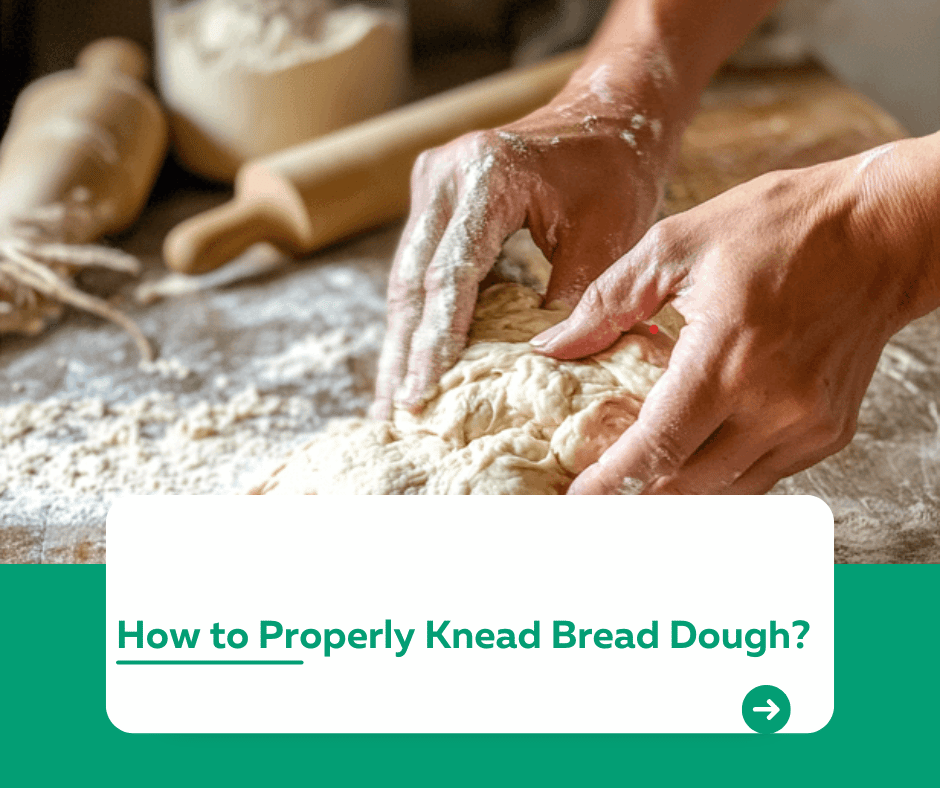
Introduction
“How do you properly knead bread dough?”
Kneading is a fundamental step in bread making that transforms a sticky mixture of flour and water into smooth, elastic dough. Proper kneading develops gluten, which gives bread its structure and chewiness. Whether you’re a beginner or an experienced baker, mastering the art of kneading will elevate your bread-making skills. This guide explains how to knead dough effectively, common mistakes to avoid, and tips for success.
1. Why Is Kneading Important?
Kneading activates gluten, a protein in flour that creates the structure of bread.
- Benefits of Kneading:
- Develops elasticity, allowing dough to trap air bubbles.
- Ensures an even crumb and chewy texture.
- Distributes ingredients evenly throughout the dough.
Tip: Proper kneading is essential for bread to rise and hold its shape.
2. Tools You’ll Need
- A clean, flat surface (e.g., countertop or large cutting board).
- A bench scraper (optional, for sticky dough).
- Patience and a little arm strength!
3. Step-by-Step Guide to Kneading Dough
1️⃣ Prepare the Dough: Mix your ingredients until they form a shaggy, sticky mass.
2️⃣ Flour the Surface: Lightly dust your work surface with flour to prevent sticking.
3️⃣ Begin Kneading:
- Push the dough away from you with the heel of your hand.
- Fold the dough over itself and give it a quarter turn.
- Repeat the push, fold, and turn motion.
4️⃣ Continue Kneading: Knead for 8–10 minutes until the dough is smooth, elastic, and no longer sticky.
4. How to Tell If the Dough Is Properly Kneaded
- Windowpane Test: Stretch a small piece of dough between your fingers. If it forms a thin, translucent membrane without tearing, it’s ready.
- Touch Test: The dough should spring back when gently pressed with your finger.
Pro Tip: If the dough feels too sticky, sprinkle a small amount of flour, but avoid over-flouring as it can make the bread dense.
5. Common Kneading Mistakes to Avoid
- Under-Kneading: Leads to dense, flat bread due to insufficient gluten development.
- Over-Kneading: Can damage gluten, making dough too tight and difficult to work with.
- Using Too Much Flour: Creates a dry dough that doesn’t rise well.
Tip: Focus on the dough’s texture and elasticity rather than timing alone.
6. Can You Knead Dough Using a Mixer?
Yes! If you prefer a hands-off approach, use a stand mixer with a dough hook.
- Mixer Tips:
- Knead on low to medium speed for 5–7 minutes.
- Stop the mixer occasionally to scrape down the sides of the bowl.
7. Practice Makes Perfect
Kneading dough is a skill that improves with practice. Experiment with different types of bread recipes to get a feel for dough texture and consistency.
Conclusion
Kneading bread dough is an essential skill for any baker. By mastering this technique, you’ll achieve light, airy loaves with perfect texture and flavor. Whether kneading by hand or with a mixer, remember to enjoy the process—it’s part of what makes homemade bread so rewarding!
For more baking tips and tutorials, visit our Kuestion.com.